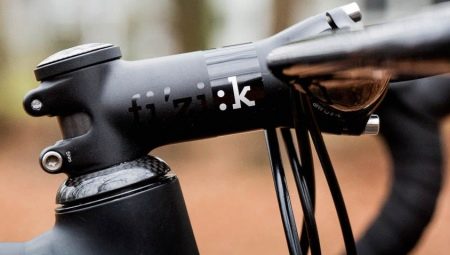The steering column of a bicycle is a functional unit, without which the bicycle would only ride straight, without being able to turn to the side. You wouldn’t have gone far on such a bicycle, you would have gone the wrong way and the wrong streets. When you turn, you would stop, and without steering, the bike, no matter how fast you ride, would fall on your side with you.
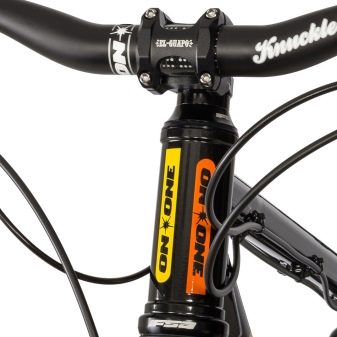
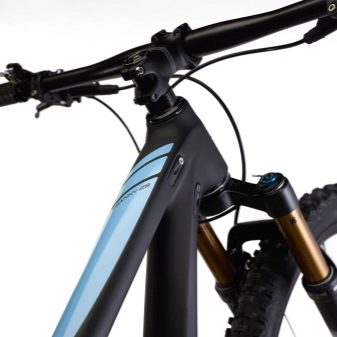
Steering gear
The steering column contains all the parts necessary for the operation of the steering wheel. It includes the following elements.
- Steering tube - the cyclist holds onto her hands while riding. It contains accessories and gadgets.
- Carriage removal - a shortened pipe to which the steering “stick” itself is fixed using a bolt bracket or lock.
- Support pipe - part with internal fasteners, rigidly fixed with a fork. That, in turn, holds the front wheel of the bike. Turns of the steering wheel coincide up to fractions of a degree with turns of the fork and front wheel in the right direction when driving.
- Steering glass - a large diameter pipe, which is already part of the frame. For stable and smooth operation, the entire mechanism is “planted” on cups with ball bearings.
- Bearing Kits - upper and lower - do not allow the steering wheel to hang out. The conical support is in contact with the bottom kit.
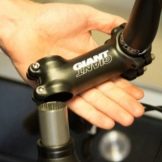
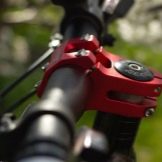
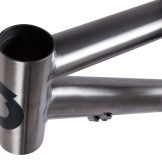
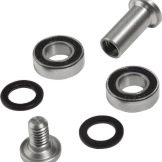
Such a scheme is verified by many years of experience in the practice of manufacturers and users of bicycle products. The steering column has certain standards and diameters that vary from one bike model to another.
Varieties of steering columns
There are 4 varieties of steering gears: threaded, threadless, integrated and semi-integrated. Each of these varieties is arranged as follows.
Threaded
In this assembly, the steering tube is secured with a lock nut. The thread is cut on the upper cup. Advantages - low weight and low cost, it has been used since when multi-speed bicycles did not exist. The disadvantage is that the threaded column is difficult to set up and has reduced reliability. The latter is to blame for low water resistance: if the bike gets caught in the rain, water flows into the steering column.
In general, the design resembles a pedal or wheel hub. Over time, the threaded steering column can spin up spontaneously - check the tightness of all joints from time to time.

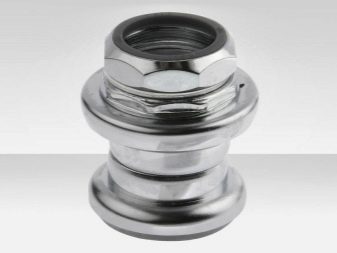
Threadless
The structure of the threadless steering column implies a different mounting method. The upper and lower cups are clamped in the steering glass itself. A ball bearing with a guide cage is placed in each of the cups. The assembly of the mechanism includes 2 stages:
- insert special rings and remote steering pipe;
- fastening the steering tube.
Here cups and ball bearings are moved outside the steering tube. The direct load from the fork clamp passes the threadless design. The threadless column is generally of the non-integrated type.
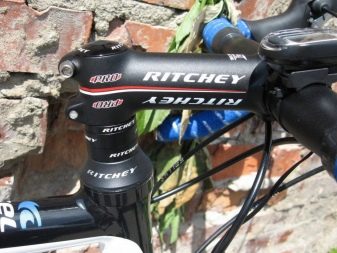
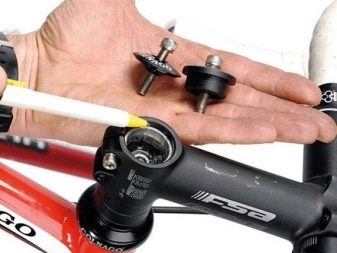
Semi-integrated
The semi-integrated mechanism differs from the non-integrated one in that the bearing crowns in it together with the cups are completely inserted into the steering glass. Only anthers come out. The semi-integrated mechanism consists of a set of parts that allow you to easily and accurately adjust the height of the steering wheel.
The entire assembly has a finished look - both in the context and in general view from the side. The resulting steering arrangement allows the rider to use the overall bike geometry more efficiently, creating less windage when riding upwind and uphill. The fact is that the threadless design itself makes it possible to use a “lying” steering wheel. This effect is most fully felt by bikers with a road bike.
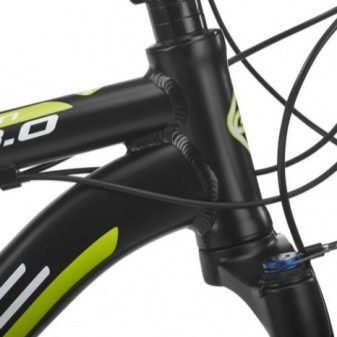
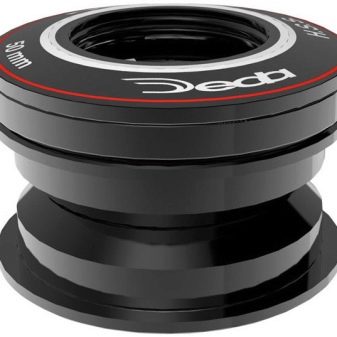
Integrated
This device is such that there are no cups in such a mechanism at all. The ball cage is immediately inserted into the steering wheel. Furrows on which balls are rolled are absent - bulk bearings (without separator crowns) will quickly grind off and will slip rather than roll on internal surfaces. For an integrated steering column, you need the same frame adapted for the same mechanism, it is not interchangeable with other varieties.
It is more difficult to repair such a wheel independently, outside the cycle workshop, and the pipe diameters have an impressive range of ratings.
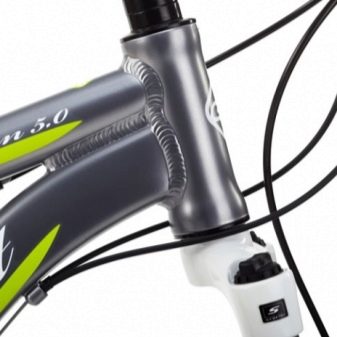
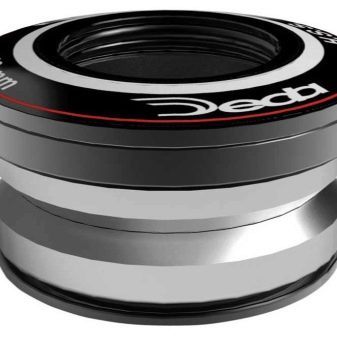
Standards
All steering columns have standards introduced by leading suppliers. The goal is to promote their own ideas that have not yet conquered the market, or to protect themselves from falsification by little-known Chinese firms.
- Campagnolo - semi-integrated column with cup and ball bearing in tapered version. In this case, the bicycle frame is sharpened in a special way.
- Perdido - a semi-integrated version, different by 4 mm from the more widespread version of ZeroStack.
- Columbus - A classic from Aheadset. It is protected from counterfeiting and unformatted modification with a special value for the diameter of the pipe.
- Onepointfive standard - non-integrated steering column for a wide diameter pipe. Several manufacturers have come together to produce parts for downhill and other extreme bikes.
- Folding steering column - The prerogative of bicycle manufacturers seeking to make a bicycle a transformer that is extremely easy to transport in trains and planes, most convenient to store in small rooms. Such, for example, are bike designs from Langtu. The angle of inclination of the folding structure is from 25 degrees.
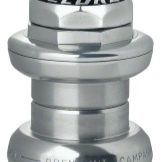

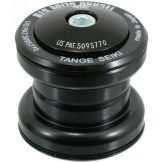
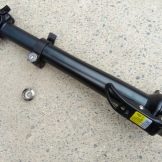
The classification by parameters is much more comprehensive. Threaded columns in diameter have the following indicators:
- 1 inch - the outer diameter of the cups is 30-30.8 mm, the inner is 26.4-27 mm;
- 1,125 inches - 34 and 30 mm respectively;
- 1.25 inches - 37 and 34 mm.
Simple threadless have the following mounting diameters:
- 0.833 inches (marker EC-32 in outer diameter) - 32.7 and 26.4 mm for the outer and inner diameters of the cups, respectively;
- 1 inch (EC-30) - by 30.2 and 26.4 mm;
- 1,125 inches (EC-34) - 34 and 30 mm in diameter;
- 1.25 inches (EC-37) - 37 and 33 mm;
- 1.5 inches (EC-49) - by 49.7 and 39.8 mm;
- 2.21 inches (EC-56) - outer diameter by 56 mm, inner not regulated.
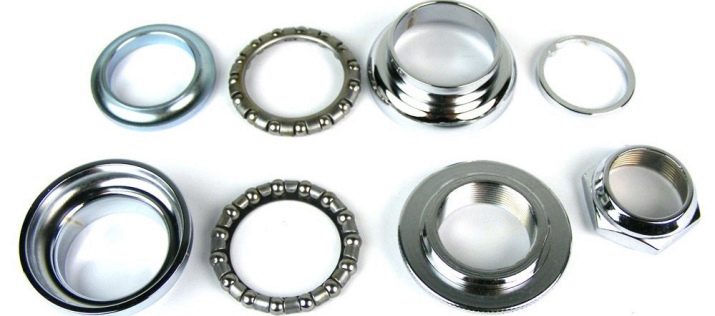
Semi-integrated threaded columns have the following external and internal diameters for bearing parts:
- 1,125 inches (ZC-41) - 41.3 and 44 mm;
- 1.5 inches (ZC-49) - by 49.7 and 39.8 mm;
- 2.21 inches (ZC-56) - 56 mm for the outer diameter;
Fully integrated threadless - have the following scatter:
- 1 inch (IS-38) - 38 and 26 mm;
- 1,125 inches - (IS-41/42/47) for 41.3, 41.8, 47 (any of the values for the outer diameter) and 30 mm (for the inner);
- 2.05 inches (IS-52) - 52 mm for outside diameter.
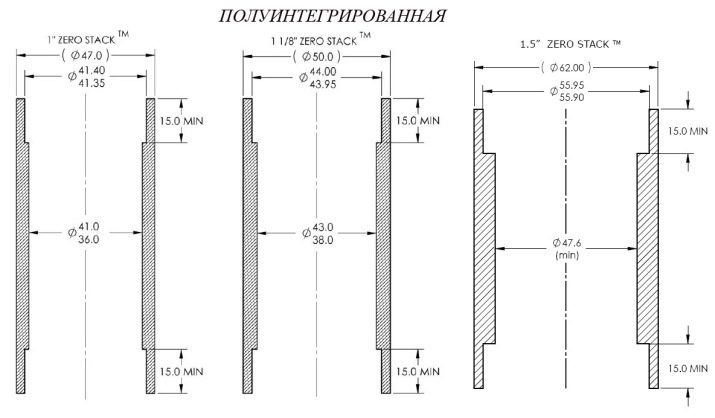
The parameters are indicated on the factory packaging with parts.
Features of selection and installation
It is advisable to choose steel cups and bearings. Tsvetmet (aluminum alloys), composite materials and plastic are not suitable here - they do not have sufficient hardness and strength, wear resistance. So, aluminum balls more often burst than wear out - from shock and vibration. Plastic and composite rings quickly wear out both from rolling the balls and cages themselves, and as a result of sliding along the pipe itself and the steering wheel.
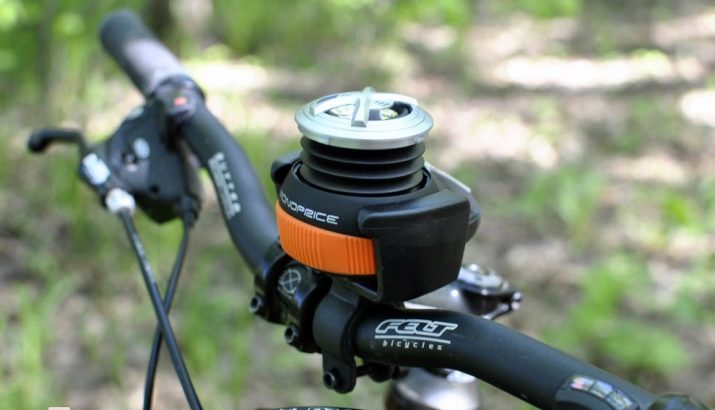
If when installing a new kit it turned out that the groove was formed not on the cups, balls, rings or cage, but in the steering glass itself - the frame, not the steering kit, should be replaced. A dangling steering column will simply break new bearings over several tens of kilometers.
The steering column is adjusted immediately during the assembly process. Once you thoroughly tighten the structure, improperly adjusted take-out will not allow you to ride comfortably.
About what features of steering columns of the bicycle exist, see in the following video.
